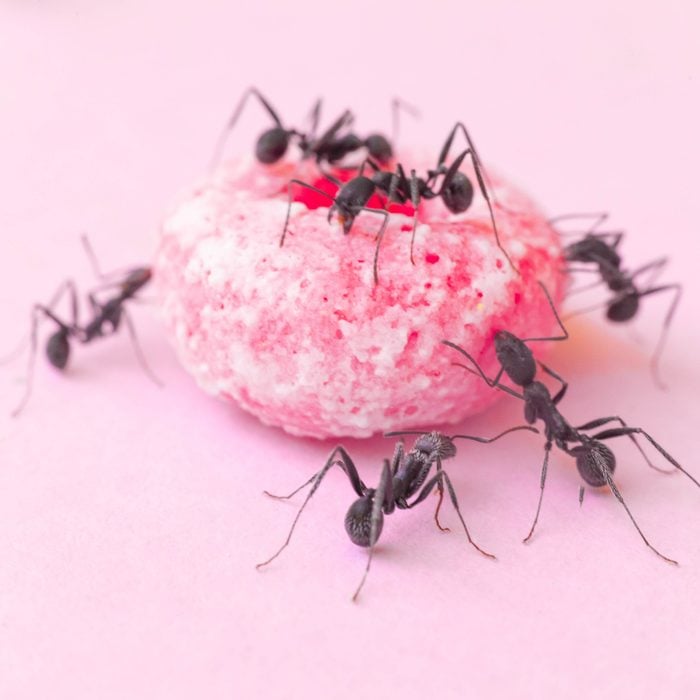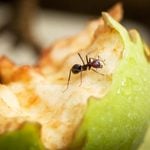The Homeowner’s Guide to Ant Pest Control

Ants, the most common insects in the world, are an essential part of our ecosystem. They're also a big nuisance. Here's information to help you deal.
Our editors and experts handpick every product we feature. We may earn a commission from your purchases.
Amazingly cooperative, impressively diligent and annoyingly invasive, ants are complex and fascinating creatures. There are an estimated 22,000 different species of ants worldwide. Nearly 1,000 varieties live right here in the U.S.
From their characteristics to their behaviors to their habitats, our guide contains a wealth of information about how to co-exist, control and, if need be, get rid of ants simply and safely.
On This Page
What Do Ants Look Like?
Not to be confused with termites, ants are between 1/16-in. and two inches in length with big heads, elongated bodies pinched at the waist, swollen abdomens and six spindly legs. They sport threadlike elbowed antennae, come in colors ranging from white to jet black. Some have wings, and some have stingers. Most people recognize an ant when they see it. Do you?
Plus, here’s more information on how to get rid of ants, as well as other pests.
What Are the Different Types of Ants?
According to PestWorld.org, the three most common types of ants in the U.S. are carpenter, odorous and pavement. In warm tropical climates such as in the South and Southwest, you’ll find an abundance of red fire, ghost and big-headed ants. However, no matter where in the country you live, there are certain things that all ants have in common:
- They build structured nests (hierarchical colonies) with at least one queen;
- Worker ants are wingless, sterile females;
- Male ants (a.k.a. drones) exist for one purpose — reproduction;
- Ants communicate with each other through scent (pheromone) trails;
- Most species forage for food crumbs, but some feed on dead insects, raise aphids or farm fungus.
Plus, are ants dangerous to people, pets and property?
How to Identify Ants
The first step in fighting an infestation in your home or garden is to know what type of ant you’re dealing with. Identifying ant species can be complicated. Luckily, we put together a comprehensive list that explains how to identify different types of ants you may encounter in and around your home. Here’s how to identify different types of ants.
Where Do Ants Live?
Lurking inside cupboards, under rocks and in woodpiles, you’ll find ants almost everywhere — in the city and on the farm. Their nests can be found in above-ground mounds, burrowed in tree trunks or located deep underground, their extensive network of chambers unseen by the casual observer. Possessing an insatiable appetite, if food sources are plentiful, ants won’t hesitate to take up residence in your house or garden.
What Are the Signs That You Have Ants?
The easiest and most obvious way to know if you have an ant infestation is by sight. If you find live ant trails, especially inside your home, there’s a good chance you have a problem. For certain types of ants, like carpenters, you might hear rustling noises in the walls or see wood shavings scattering about.
If you smell rotten coconuts or a distinct musty scent, odorous or citronella ants may have invaded. In the yard, look out for mounds in the garden or holes in your lawn — both can be an indication of an ant infestation.
How to Get Rid of Ants
There are many ways to rid yourself of ants:
- Baits: Easy to use stations/traps and stakes are pre-filled for convenience;
- Sprays: Aerosol and pump sprays are a short-term solution that kills ants on contact;
- Gels: Potent gel can be applied directly into cracks and crevices where you see ants;
- Granules: Small pellets for spreading on lawns and around large yards;
- Powders: Ants ingest the fine powder and die;
- Home remedies: Natural and non-toxic, most home remedies are safe around kids and pets.
Experts often recommend mess-free bait stations and stakes because the poison works at the source, killing the queen and her colony.
Keep in mind that ants can build nests in hard-to-reach places, like inside walls or under foundations. If you suspect an infestation, consider calling in a professional pest control expert right away. A knowledgeable ant exterminator can quickly assess the situation and recommend a method that addresses your particular pest problem.
Ant Safety and Concerns
Many ants sting or bite, but not all. Most of the time bites and stings may be painful (from red fire and leafcutters especially) but they are rarely serious. People allergic to bee and wasp stings, however, should take extra precautions when working in the garden near mounds. Pharaoh ants, for instance, are known to carry diseases and should be dealt with at the first sign of infestation.
Most ant repellents and insecticides are made of toxic or poisonous ingredients, so it’s probably best to opt for eco-friendly, organic remedies if kids and animals are about. If you’re not sure how to proceed, contact a professional exterminator for help and advice.



